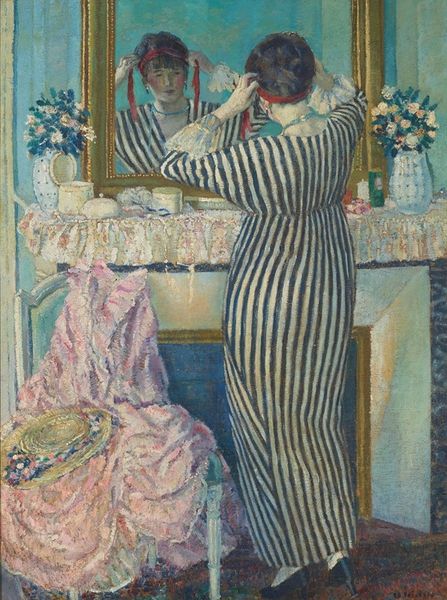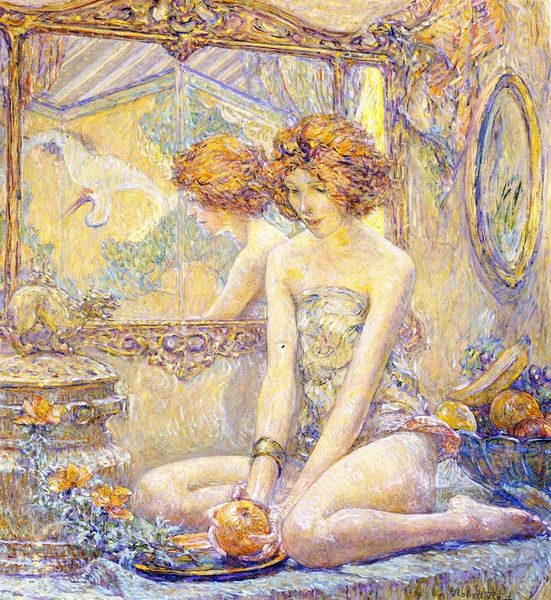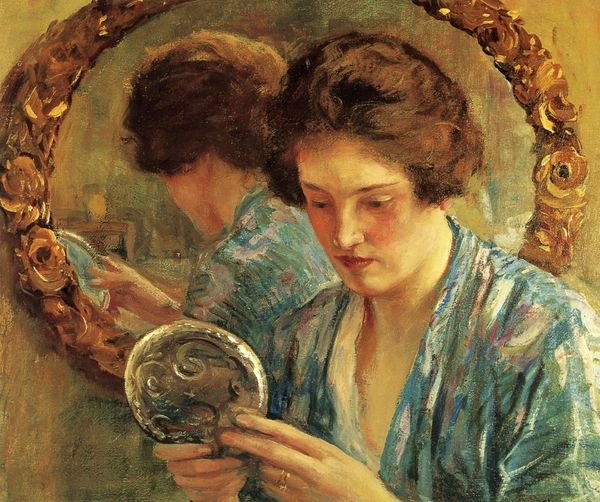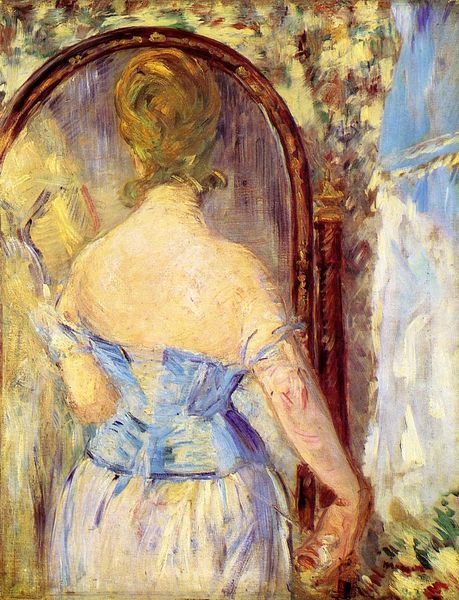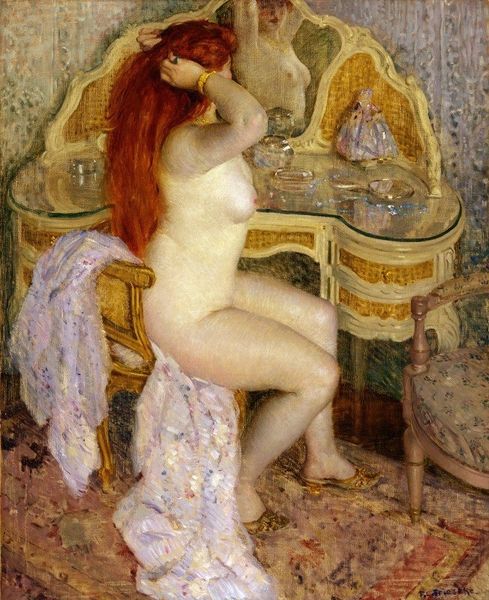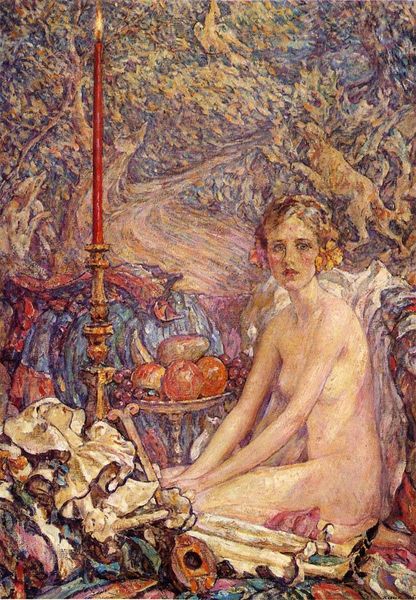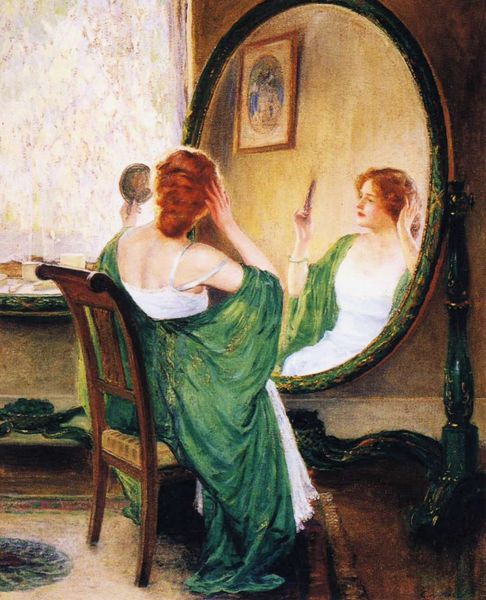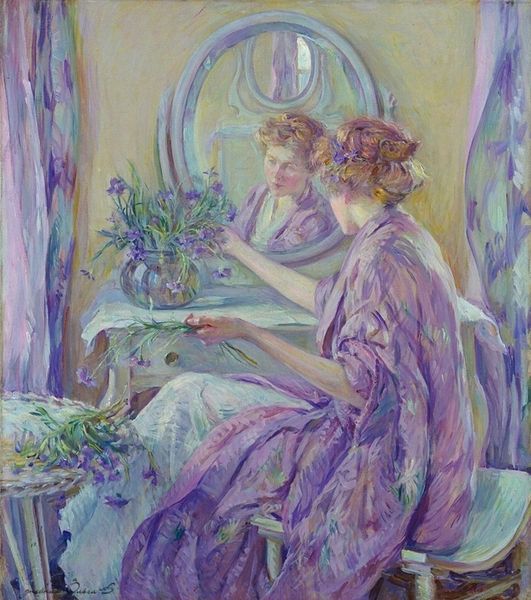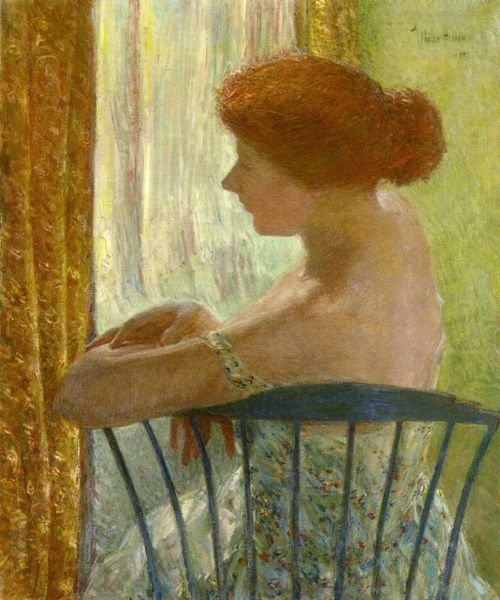
Dimensions: 78.74 x 64.77 cm
Copyright: Public domain
Curator: Theo van Rysselberghe’s “Woman at a Mirror,” completed in 1907, offers us an intimate glimpse into a private moment. Editor: My first impression is one of muted elegance, though the vibrant dots give a nervous, almost vibrating quality. The brushstrokes give it such visual richness. Curator: That shimmering quality is characteristic of Neo-Impressionism, a style that was deeply intertwined with scientific theories about optics. Here, we see van Rysselberghe employing a Pointillist technique to render not only the woman's form but also the surrounding environment, activating dialogues about womanhood, privacy and spectacle. Editor: Indeed, the meticulous application of paint creates this field of tiny visual incident across the canvas. Consider the juxtaposition of textures—the smooth skin, the textured curtains, the patterned wallpaper, all meticulously built up with these little dabs of colour. And how the curved mirror frame, almost mirroring the curved figure, reinforces an underlying unity in the composition. Curator: Let’s think about the implications of this mirrored image. At the time, women's roles were under intense scrutiny, often confined to the domestic sphere. The act of self-reflection—both literal and metaphorical—becomes a powerful assertion of agency within that constricted space. Editor: It’s intriguing how the face in the mirror seems less tactile than the woman’s back. One almost feels the weight and form of the nude model more intimately than her ‘public’ presentation reflected to the viewer. It gives this impression of an unfinished, vulnerable narrative, in conversation with her personal space. Curator: Yes, absolutely. The positioning suggests she's both the object of the artist’s gaze and, simultaneously, an active participant in constructing her own image. That complex interplay of perspectives allows us to view this scene not merely as a depiction of a woman but also as a meditation on the very nature of looking and being seen, considering contemporary expectations around the gaze. Editor: Thinking about that gaze, that self-construction: Rysselberghe's focus on light and form, on how those formal qualities generate meaning, leaves us as viewers suspended, I think, between appreciation and intellectual curiosity, lingering long after the viewing is done. Curator: I agree. By understanding this painting within the broader currents of early 20th-century society, particularly in regards to class and gender dynamics, we are granted a potent perspective of its many interwoven layers.
Comments
No comments
Be the first to comment and join the conversation on the ultimate creative platform.
